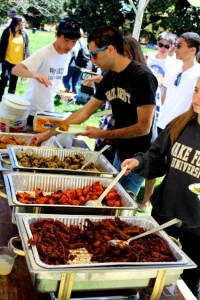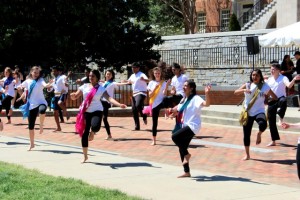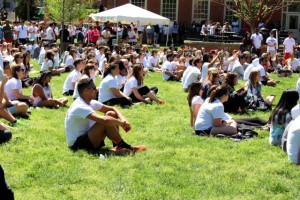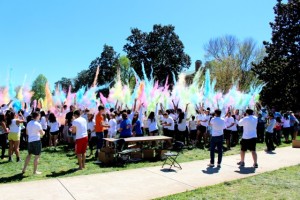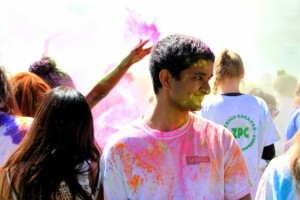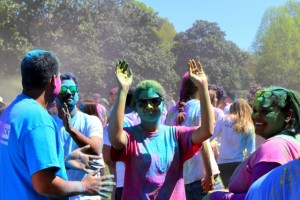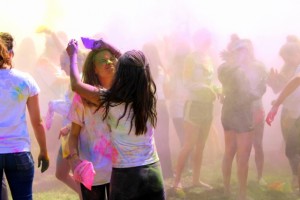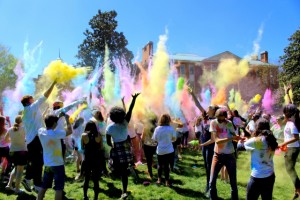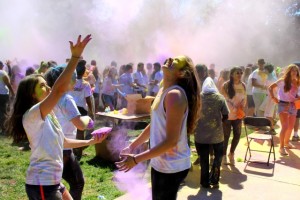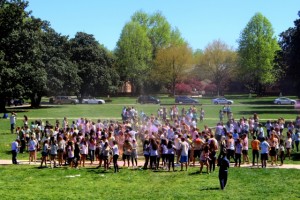Wake Forest Field Hockey Team Holds Annual Melanoma Fundraiser – Suyash Keshari
Wake Forest University’s field hockey team hosted its seventh annual melanoma fundraiser in remembrance of a former player, Maria Whitehead who lost her life to melanoma cancer.
The Melanoma Research Foundation of United States recognizes melanoma as one of the fastest growing cancers worldwide.
According to the foundation, in United States alone every eight minutes someone is diagnosed with melanoma and every hour someone will die from it.
The spikeball tournament fundraiser appropriately named ‘Fight For Fiver’ after Whitehead’s jersey number seeks to raise awareness about melanoma cancer as well as funds for cancer research.
Standing at a mere five feet tall and weighing 105 pounds, Maria Whitehead walked into Wake Forest field hockey office her senior year of high school.
Jennifer Averill, the head coach of the field hockey team recalls, “my first reaction on seeing her was that this is not going to work out. Her stature did not impress me. But her actions and words did.”
Averill adds “I told Maria that I don’t think she is big enough to play in the ACC however, she redirected me ‘any time, any day, any opponent.’ Taken aback by this statement I shook her hand and said welcome to Wake Forest.”
Whitehead had a successful career at Wake Forest University. She had a total of 40 assists which is the fifth most in Wake Forest history, was a two-time all-ACC selection, helped Wake in reaching three final four appearances and contributed to bringing home Wake Forest’s first ever national championship for field hockey in 2002.
Claire Lawhon Pearce, who played two years with Whitehead said “Maria was never afraid of anything and it didn’t matter how small she was.”
After graduating from Wake forest in 2002 Whitehead got a job as a coach for St Louis University’s field hockey team becoming the youngest college coach in the country.
Whitehead beat the record of her own coach by ten months.
In 2004, Whitehead was diagnosed with a stage four melanoma skin cancer.
Averill recalls, “I was in tears when I heard this news. But the first time she had come to my office, I remember telling her that I believe in her. So I told her the same this time.”
“Everyone in Whitehead’s life believed that she could beat cancer” recalls Katie Ridd, one of her teammates.
However the cancer spread to Whiteheads brain over the next few years and she succumbed to it in November 2006.
The fundraiser hosted in remembrance for Whitehead’s legacy and in order to raise awareness about melanoma cancer, saw a large participation by Wake Forest students and staff.
Heather Wiley, a Wake Forest field hockey player shared her feelings about the event; “I am really happy to see such a large turnout here today. None of us ever played with her but doing this makes all of us feel like, we were a part of her life.”
Standing next to Wiley, Valerie Dahmen, a teammate added “her spirit as lived on through all of us. She is the reason I came to wake and the reason why we give our best. This event keeps her legacy alive.”
While the team’s aim is to reach at least $5000 every year, iconic to Whitehead’s jersey number. The team had already crossed $6000 in funds before the event began.
Rachel Hirsch one of the team members noted that “we are now trying to reach double of Maria’s number. I am sure we will be able to make the $10,000 mark by the end of the day as donations are still flowing in.”
Coach Averill remarks that “every game that we play, we play in part for Maria’s legacy. The players think of her every time the put on a jersey. The fight for five.”

